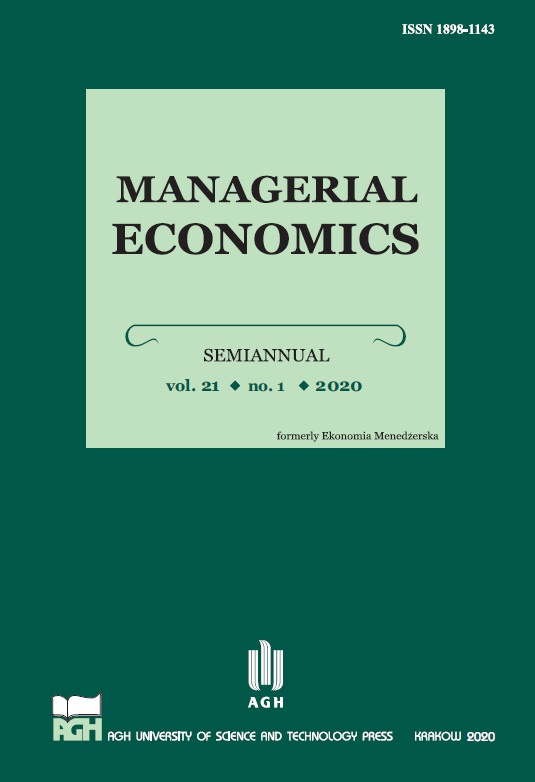Consumer surplus and budget constrained preference maximization: A note
DOI:
https://doi.org/10.7494/manage.2020.21.1.49Abstract
The paper attempts to rectify what appear to be popular but elementary misconceptions about the concept of consumer surplus in the context of Marshallian demand curves. It is primarily addressed to teachers of microeconomics at the undergraduate level or in MBA programs of business schools. The main text informs the reader about the model/context and the results we are concerned with, all of the latter being a comprehensive teaching note, relegated to an appendix of the paper. Thus, the potential instructor may use the main text to motivate himself/herself and at the same time inform his/her students as to the topic i.e. the rehabilitation of consumer surplus as an exact measure of welfare from the stand-point of cost benefit analysis. Thereafter the appendix can be referred to for a more formal presentation. The technical results contained in the appendix begin by showing that willingness to pay is the area under the demand curve if and only if consumers are surplus maximizers. The last result in the appendix is a theoretically ‘happy ending’ since it shows that for purposes of applied economics, budget constrained preference maximization implies surplus maximization and hence for such consumers, willingness to pay is indeed the area under the demand curve up to the quantity consumed.Downloads
Download data is not yet available.
Downloads
Published
2020-10-16
Issue
Section
Articles
License
Download, sign, scan and attach copyright statement form.
How to Cite
Lahiri, S. (2020). Consumer surplus and budget constrained preference maximization: A note. Managerial Economics, 21(1), 49. https://doi.org/10.7494/manage.2020.21.1.49

